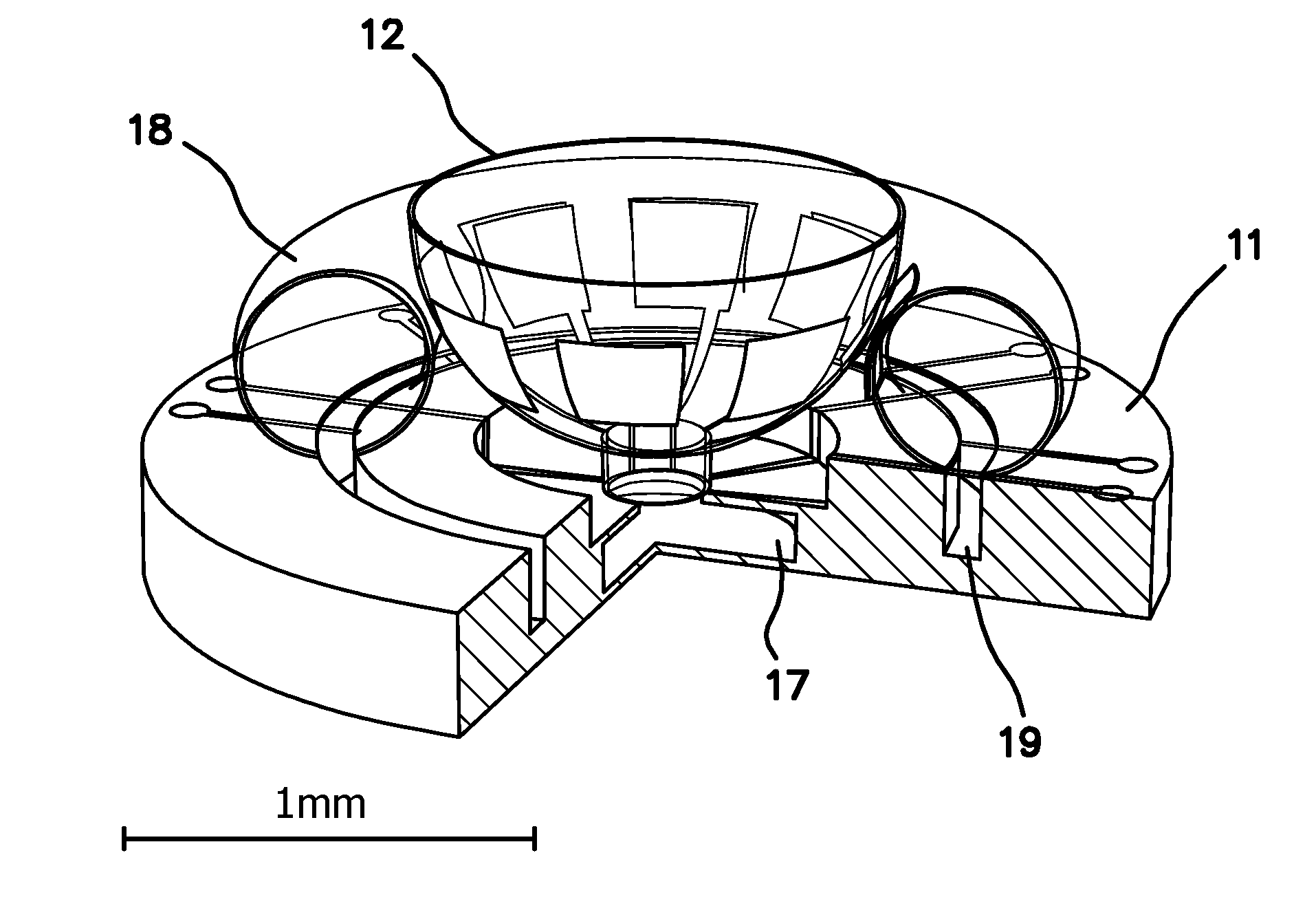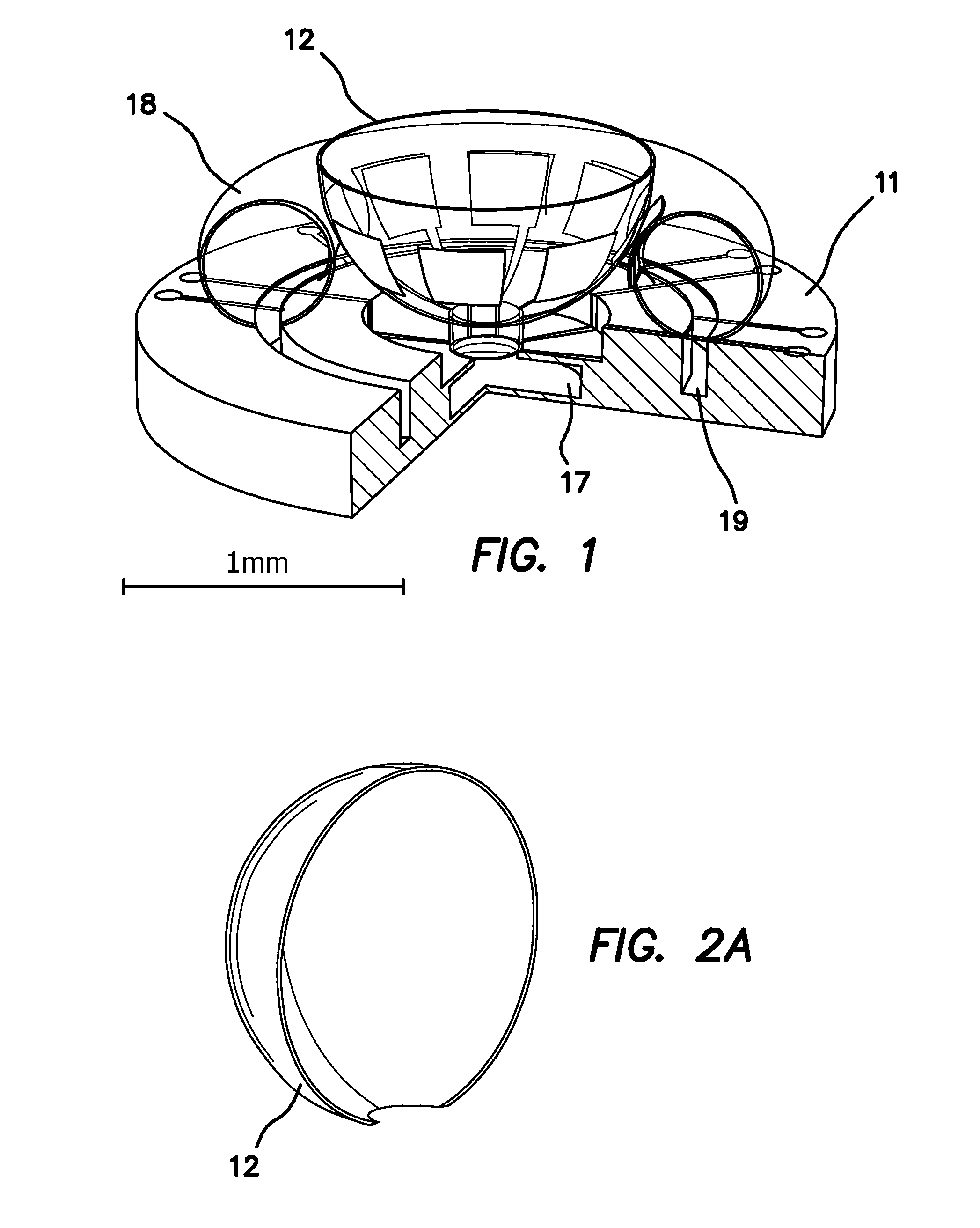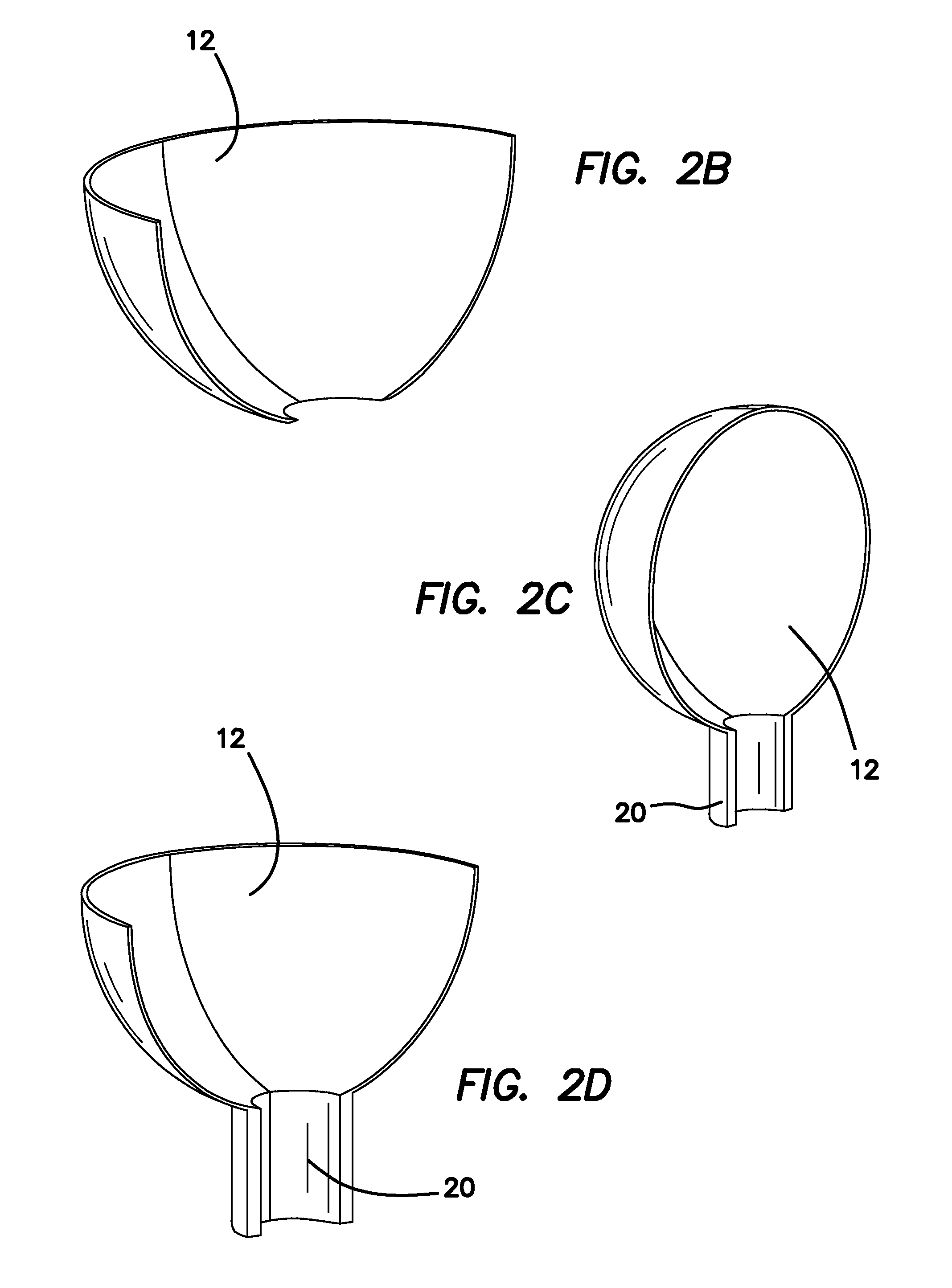Three-dimensional wafer-scale batch-micromachined sensor and method of fabrication for the same
a micromachined sensor and three-dimensional wafer technology, applied in the direction of acceleration measurement using interia force, turn-sensitive devices, instruments, etc., can solve the problems of high cost of hrg and unsuitable for man-portable applications
- Summary
- Abstract
- Description
- Claims
- Application Information
AI Technical Summary
Benefits of technology
Problems solved by technology
Method used
Image
Examples
Embodiment Construction
[0058]A three-dimensional wafer-scale batch-fabricated angle / angular rate microshell resonator gyroscope (MSRG) 10 with on-chip actuation and detection, as diagrammatically shown in FIG. 1. The various designs and fabrication methods for MSRG using extended glass-blowing techniques are also disclosed. These wafer-level techniques are not limited by the MSRG fabrication, but enable a broad class of novel three-dimensional multi-material resonant structures for inertial applications.
[0059]Three different structural implementations of the MSRG concept are shown in FIGS. 3a-3c. While these designs differ in resonant shell geometry and transduction mechanism, the main operational principle remains the same in each. The gyroscope operation is explained in detail below using an example of wine-glass MSRG 10 with spherical electrodes. Other possible configurations are also discussed, namely: “MSRG with three-dimensional transduction mechanism,” and “MSRG with separately fabricated electrode...
PUM
| Property | Measurement | Unit |
|---|---|---|
| diameter | aaaaa | aaaaa |
| diameter | aaaaa | aaaaa |
| diameter | aaaaa | aaaaa |
Abstract
Description
Claims
Application Information
 Login to View More
Login to View More - R&D
- Intellectual Property
- Life Sciences
- Materials
- Tech Scout
- Unparalleled Data Quality
- Higher Quality Content
- 60% Fewer Hallucinations
Browse by: Latest US Patents, China's latest patents, Technical Efficacy Thesaurus, Application Domain, Technology Topic, Popular Technical Reports.
© 2025 PatSnap. All rights reserved.Legal|Privacy policy|Modern Slavery Act Transparency Statement|Sitemap|About US| Contact US: help@patsnap.com



